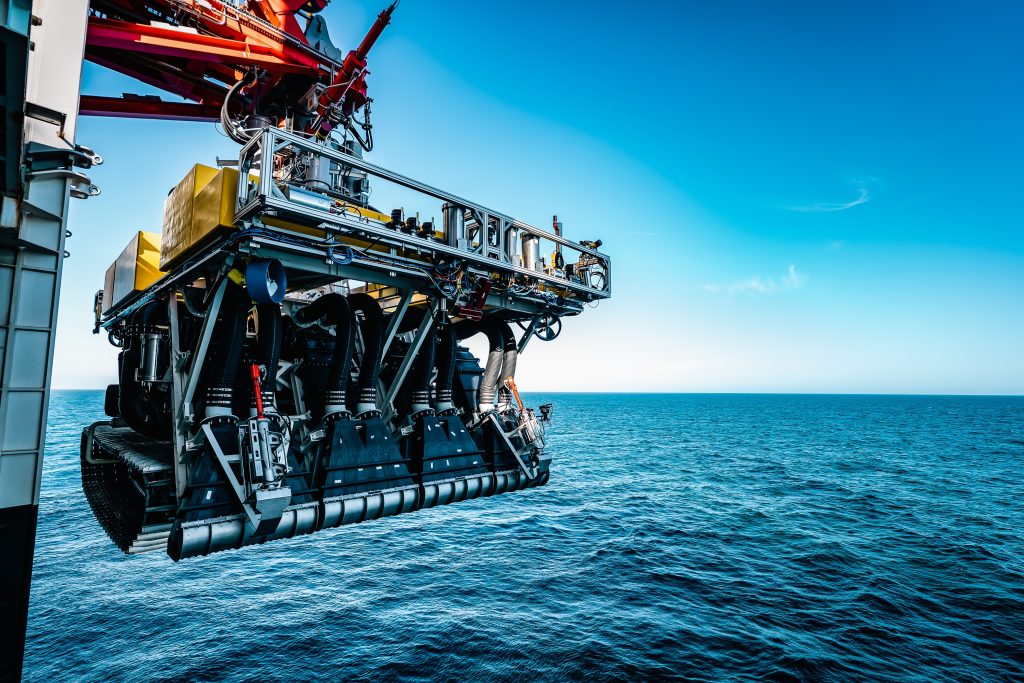Pacific Ocean to become centre of REE mining on deep sea shelf

By Eugene Gerden
The demand for REE (rare earth elements) mining on the deep-sea shelf is growing as the number of Pacific states aim to turn into centres of global REE production in the future.
One such country is Nauru, a tiny phosphate rock island nation located in the South Pacific Ocean with a population of 10,000 people, which plans to start REE mining on its deep-sea shelf already starting next year.
As part of these plans, production will begin in early 2024, while within 20 years, the local authorities hope for revenues of US$30 billion from the extraction of 240 million tonnes of materials.
So far, authorities on the Island have allowed Canadian-based The Metals Company [TMC-NASDAQ] to implement the project. It is planned that most of the work will be conducted at the bottom of the ocean, at a depth of 3-6 km where sedimentary formations – so-called nodules – are located and which usually consist of a mixture of minerals and organic materials. These minerals, in turn, contain valuable minerals such as manganese, iron, cobalt, copper, nickel and many others.
Most analysts expect that amid the ever-growing global demand for REE, such deposits will begin to be more actively developed.
TMC itself claims that it has developed sustainable and environmentally friendly solutions for extracting valuable metals although some of marine geologists and scientists believe that the main principle of such mining is still based on the removing of an entire layer of the seabed, which may harm the ecosystem of the ocean.
According to Konstantin Ranks, a well-known marine geologist and scientific journalist, “such a mining method has been discussed for half a century, and for half a century there have been people who have been against it, because it requires scraping the bottom of the world’s oceans.”
Konstantin Ranks commented, “This is not a shelf. The shelf is up to 200 meters. Then the depth begins to reach 3.4 kilometers, where these valuable minerals are located. Of course, speaking on the scale of the entire ocean, the reserves are huge, and obviously this is profitable.”
The Nauru project is not the only one that involves extraction of minerals from ocean floor. For example, Norway is already exploring the possibility of deep-sea mining and has discovered significant reserves of nodules on its shelf. China has also issued five exploration and deep-sea mining licenses.
Some analysts also believe that REE mining from the seabed could become more profitable than oil production although more active development of the industry is prevented by the lack of a legal framework.
Two years ago, it was decided that the rules for the development of such deposits should be overseen by the UN International Seabed Authority (ISA); however, these plans were never implemented. Earlier it was reported that such a legislative base should have been adopted by July 2023, however, its development has not yet been completed.
In addition to the Nauru deposits, it will also regulate REE mining activities in the Clarion-Clipperton zone, a geological underwater rift in the eastern Pacific Ocean, between Hawaii and Mexico. Here, at a depth of 4,000 metres, trillions of manganese nodules were discovered, which contain REE.
According to some estimates, the real deposits on the Pacific Ocean bed may contain up to 80-100 billion tonnes of rare earth materials. Currently, only geological exploration is permitted in the Clarion-Clipperton zone, while full-scale production has not yet begun.
Still, there are some countries in the world, such as France and Spain, which demand a complete ban on deep-sea mining, fearing negative consequences for the environment. Their analysts believe that the extraction of these minerals will be associated with serious technical difficulties.
In addition, uncontrolled deep-sea mining could cause unpredictable consequences for the ocean ecosystem due to the possible destruction of hydrothermal vents and possible damage to various forms of marine life and biodiversity.
